Can pool water ever be kind to fragile skins?
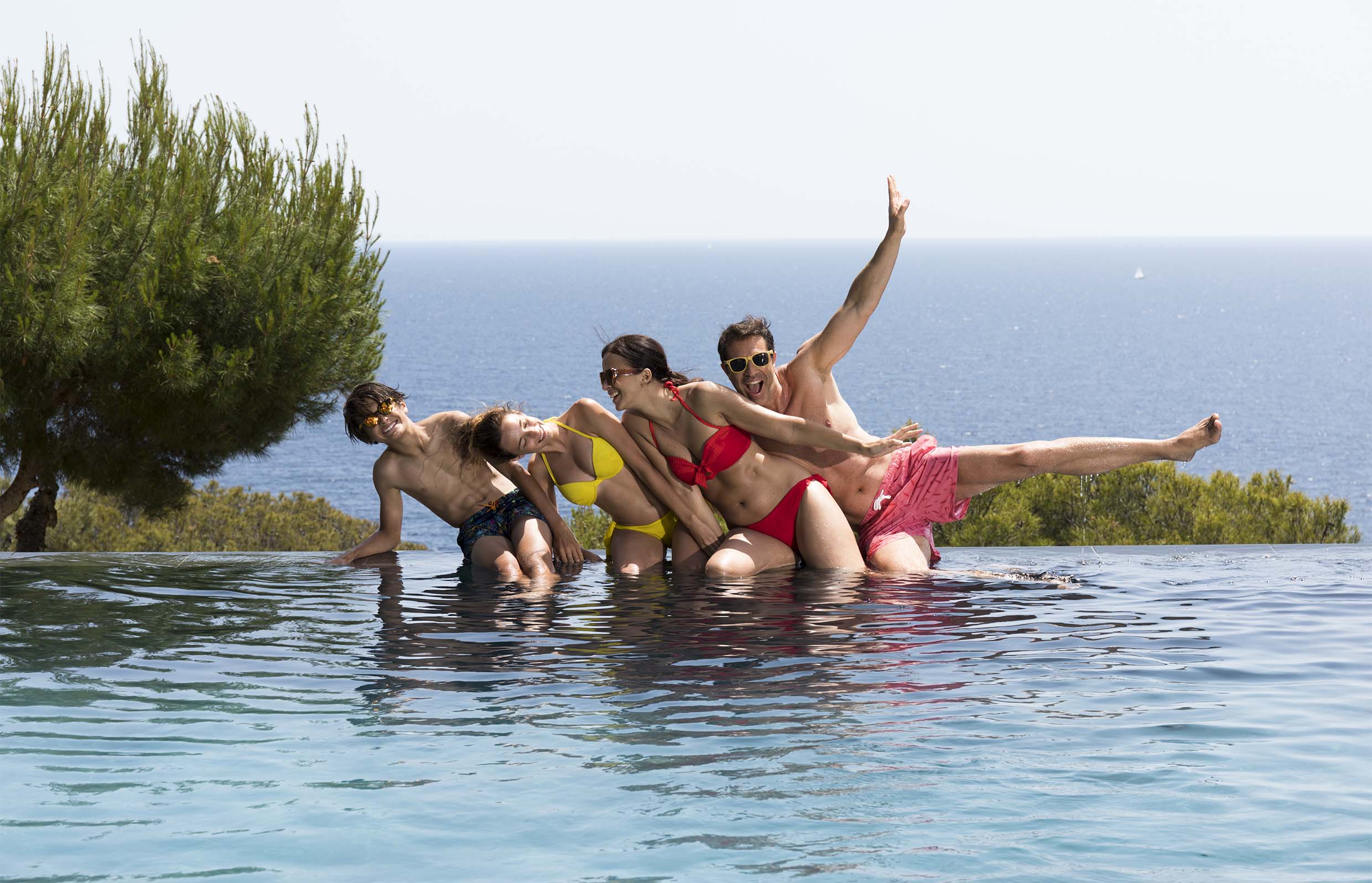
Which water-treatment system should you choose if you have fragile or reactive skin, or suffer from allergies ? Here are our tips to help you make the right decisions.
Chloramine allergies can irritate skin
People often say they are allergic to chlorine. They complain of symptoms ranging from skin irritation to sore eyes. In fact, they are reacting to chloramines, sub-products of chlorine that develop and accumulate in poorly maintained swimming pools. When chlorine comes into contact with organic debris such as hair, dead skin cells, sweat or saliva, a chemical reaction occurs, generating volatile chemical compounds called chloramines. So, what's the worst cokctail? Urine + chlorine, the dread of public swimming pools. Fortunately, this isn't such a problem in private pools. As you no doubt know, descaling your sand filter once a year is a good preventive measure, because limescale encourages bacteria to grow.
Salt chlorination - a more skin-friendly solution
Although they are highly effective, traditional chlorine tablet-based water-treatment systems are the least skin-friendly option. Salt chlorination is a good alternative, because although the system functions by producing chlorine, it generates fewer chloramines. And there's no need to worry about salty water either. Salt levels in salt-chlorinated pool water are low - close to the levels found naturally in body fluids. Salt levels in pool water are estimated at around 3.5g per litre, while tears contain 7g per litre.
The Hayward AquaRite® +: a pool and water treatment management solution for salt-chlorinated pools
The AquaRite® + control box measures and regulates your water parameters: pH and ORP (redox). It fine-tunes chlorine production as necessary by adjusting the salt with no need for any action on your part.
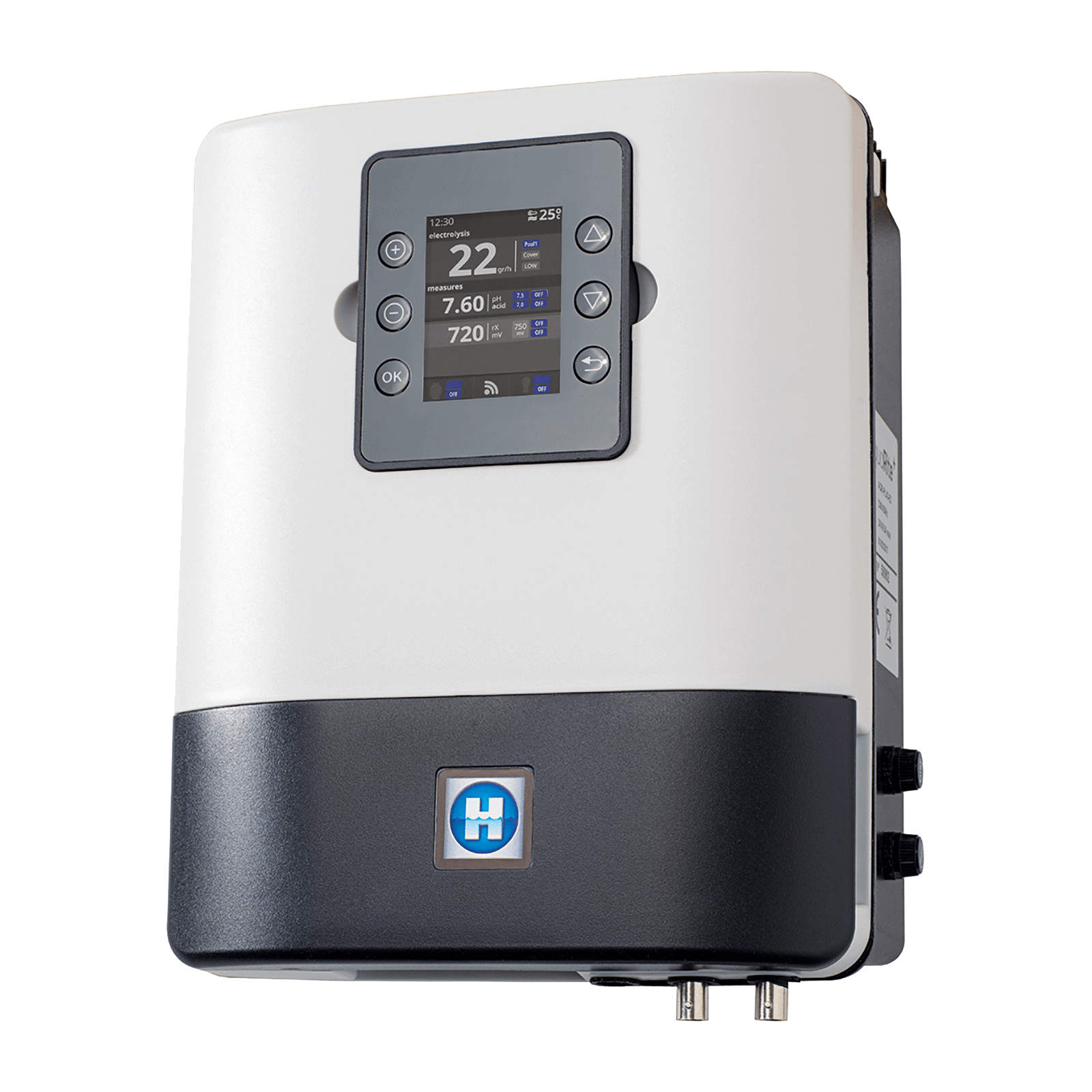
The advantages of UV systems
UV water-treatment systems disinfect pool water by passing it through a UV reactor. They desinfect the water perfectly, but European standards also require water to be disinfecting and they cannot achieve this. So, a chlorine or electrolysis treatment has to be used in addition to the UV system to create an ongoing effect. Whichever system is chosen, the proportion of chlorine added is lower than it would be without the UV system, and it has less impact on the body. However, it is important to understand that UV rays destroy chlorine and so regular checks need to be made to ensure enough is being added to the water.
The Hayward AquaRite® UV LS: three technologies working in synergy for superlative disinfection
The innovative AquaRite® UV LS combines three disinfection systems (UV technology, low-salinity salt chlorination and hydrolysis) to leave your pool water clearer, safer and even more pleasant to swim in than standard salt chlorination.
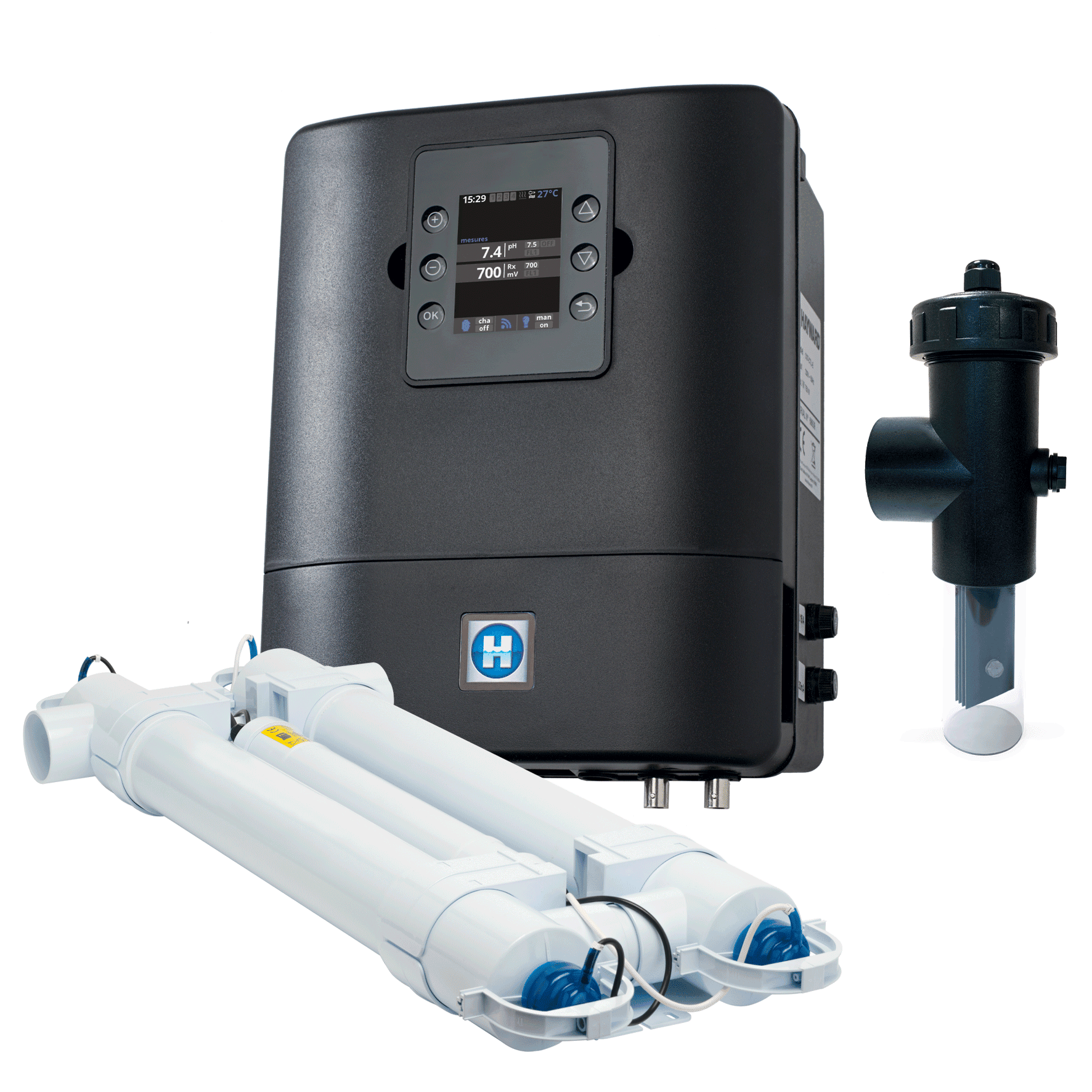
What about active oxygen, H202?
This sytem involves dosing the water with active oxygen to oxidise nasties. The main problem is that active oxygen acts quickly and then turns into water. Consequently, it has very limited persistence. The effect does not last, and a dose needs to be injected every hour. Because it is a very expensive system to use, it is only suitable for small pools. Active oxygen also attacks plastics such as liners, causing premature wear.
You will like also ...
ALL NEWS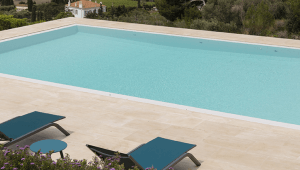 Inspiration for my pool
Inspiration for my pool
Developing your poolside area
 Inspiration for my pool
Inspiration for my pool
Choosing the right filtration pump for your pool
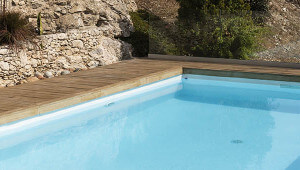 Inspiration for my pool
Inspiration for my pool
Is an eco-friendly pool really possible?
 Inspiration for my pool
Inspiration for my pool
The current top five swimming pool trends